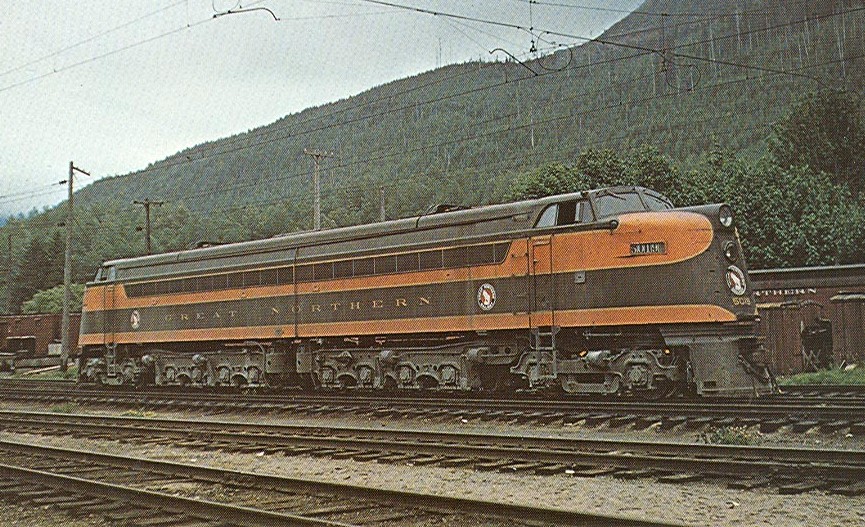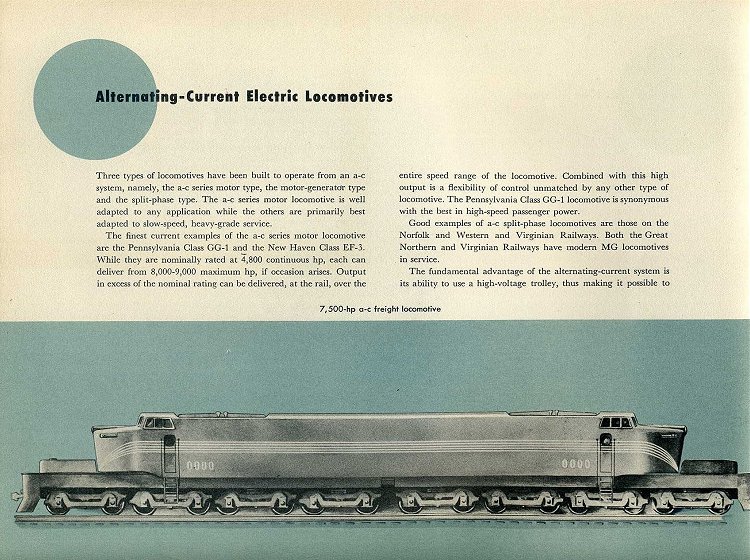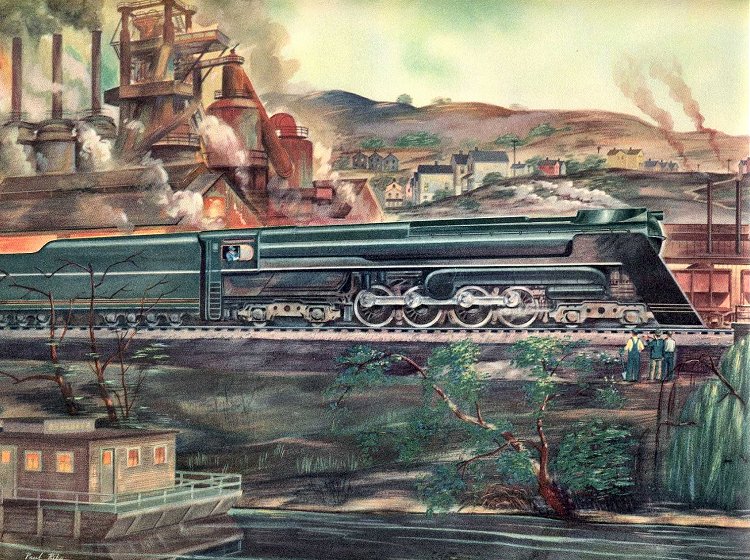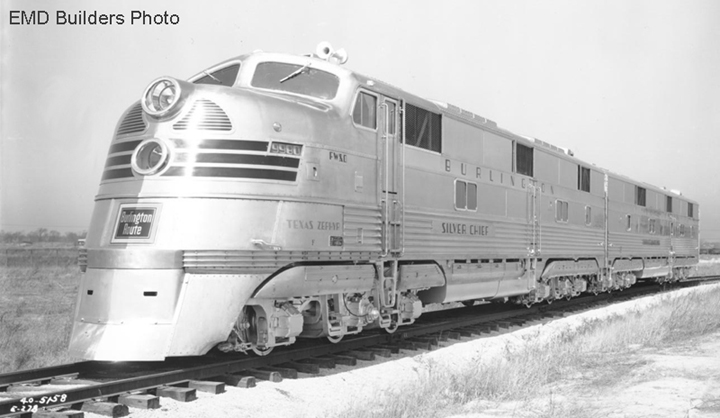That B&O 51 still exists. It’s at the Baltimore and Ohio Museum in (where else?) Baltimore, Maryland.
It’s even more impressive when you see it up-close-and-personal.
Sadly, it’s not in operating condition, but in good shape otherwise.
That B&O 51 still exists. It’s at the Baltimore and Ohio Museum in (where else?) Baltimore, Maryland.
It’s even more impressive when you see it up-close-and-personal.
Sadly, it’s not in operating condition, but in good shape otherwise.
Here is a slideshow of pictures of B&O 51 as she was in 2015…
Be aware that at least some of these are double-cab locomotives, as is the one pictured: there is a full ‘box’ operating cab at the opposite end. That is a very different appearance indeed!
Consider also the nose design on the UM-20Bs of 1954:

or the likely nose on the stillborn Alco C636P:
or, to get back on topic for those of you who like your “E-unit” bulldog noses modern, one of these (we’ve succeeded in preserving one!):
Consider also the nose design on the UM-20Bs of 1954:
There were six more with these cabs built in Australia.
They were a GE equivalent of the Alco DL 500, complete with the Alco 12-244.
https://en.wikipedia.org/wiki/New_South_Wales_43_class_locomotive#/media/File:Arhs_4303_temora.jpg
Yes, it is definitely a great piece of B&O Museum. If they could make a replica of the original Pilot, it would be even more beautiful! When I was studying about Northeast RRs completion I note this engine or her sisters from a video created by B&O on YouTube, she was hauling B&O’s prime trains which was streamlined from the front to the end.
Since some folks have nominated non-diesel cabs, can we hear it for the “Little Joe” electrics? Besides the Little Joes, I know CHJ had diesels with cabs at both ends. Baldwins, I believe? Were there any other two cab elecrtics in North America?
Well, in the have your cake and eat it too category, how about GN 5011?
And one of the few things more impressive than a Joe was a GN W-1

Still more impressive are these (but you have to make allowances for them always operating in pairs to satisfy the ‘double-cab’ condition)

GG1s and the like are bidirectional but don’t have “end” cabs so probably don’t count; there were PRR experimental GE and Westinghouse electric cab units in the early Fifties that normally ran in pairs but didn’t really constitute ‘double-cab locomotives’ in the sense you’re asking.
I am more than willing to listen to our forum member’s idea of different front-end design of different engines, I believe our forum member know how to skillfully express there thought without moving too far away from the main subject [;)] but I am not going to adjust the title of this one since it would make the title too long.

I always imagine GN W-1 as a fantasy PRR passenger engine. If the side body was a few inches lower, it would be perfect. It was just slightly more powerful than GG1 in terms of HP/DBHP but the TE was almost a double of GG1. Cool!
Well, can I interest you in a true double-cab single-unit EL-2B as a fantasy PRR passenger engine? (Sharknose to boot!)

This out of the same Westinghouse brochure that has this (I think you can guess how they got the details!):

Thanks again to Dr. Leonard for putting the brochure freely on the Web, in such an accessible format.
[tup] Definitely! Overmod. I would request the designer to further improving the front-end set-back design! By the way, I remember PRR did have a plan to develop a 7500hp or above electric locomotive, but it got cancelled, I wonder if this is one of her renderings.
Agree! The first time I found this rendering from Dr. Leonard’s site, I felt like I discovered a hidden treasure under the ground of my backyard! [dinner] The design was probably done by Baldwin’s designer who designed the New Haven I5, but the design of the boiler’s “skyline” looks like Raymond Loewy’s work. Note that there is a pair of very beautiful, streamlined smoke deflectors on the front end, and the size of that rounded smokestack reminds me of S2’s modification in late 1947, so I think it was a rendering created in late 40s. It was painted in dark green with golden stripes with a headlight above the bullet nose and rounded cab
A few pages later in the brochure (following, in fact, a page with the performance of a 7500hp continuous electric graphed out) is this:

which shows the Westinghouse theory at this moment in the late '40s - a modular construction using identical B trucks, presumably with span bolsters and in much the same fashion as the EL-2B. This didn’t last very long; we see Baldwin and Westinghouse going to trimounts for this kind of work within just a few years.
This was a pretty awful period for locomotive styling (think those C&O yellowbellies, definitely an acquired taste!) as some of the other renderings in this 1948 brochure rather dramatically show. (See the “GG1” with the bulbous City of LA-style
Welcome to 1950s, Overmod. The influence of Art Deco was fading or you can say long gone, product design was keep evolving and trying to break free from prewar styling, from a washing machine to EMD’s diesel engine, from an apartment building to the livery of a prime trains, many things were simplified… cost-cutting, efficiency-oriented, minimize or removal of all beautiful elements and fine details bit by bit. It was colorful as always, but definitely not the color I would pick; many things were still streamlined, but not in a form that would attract me. Where is my S1 Duplex? where is my Maybach Zeppelin DS8 Stromlinien and Delage D8? where is my SS Normandie? They gone for good and will never come back.
Alas!

My all-time favorite passenger diesel locomotive , on looks, has always been the Burlington’s E-5s, with the original sloping prow also used on E-3s through E-6s, and lots of stainless steel to match the stainless steel Budd consists.
But if I were designing a diesel main-line excursion train, obviously I’d want an E-9for the best performance and reliability or even better yet, rebuilt executive units with the latest Progres Rail stuff that would fit.
I mentioned earlier Professor Marre’s article.
It was in Trains for December 1971 (“The Tenth All-Diesel Issue”) pages 38 to 47.
I don’t know if you could still get this as a back issue…
It only dealt with types E-3, E-4, E-5 and E-6 and had brief historical tabulation of each unit.
The E-3s in particular were apparently limited in production, so each customer got two each, except ACL who got one, and KCS who got three (although one of those was the demonstrator.)
Peter
Regarding the B&O film: Great nostalgia… But really, heavy steel rails sagging under the weight of the train? Hope they did not sag very much!
Editor was needed!
Thank you very much, Peter. I would like to get a copy of this(…Deleted Message… )I remember you mentioned about a issue of Milestone about S1, it is probably the last book or article I need to find but I am still searching on and off. [C][O]
Have they stopped issuing the Complete Collection now?
https://kalmbachhobbystore.com/product/dvd/15100
Not to advocate this (except that I’m still irritated with their making the Collection incompatible with all modern generations of Macintosh, then not replacing the defective product discs after ‘solving’ the issue for new customers) but you might find someone with the Collection who would e-mail you a couple of screen grabs with the article pages, if you don’t want to spring for your own set. (It is very, very, very worthwhile having the set, though.)
CB&Q really put a lot effort on their legendry E-5s, even the engine trucks were skirted. They were best match of their Budd built stainless steel consists; from front end to the observation car, the train looked shinny and consistent. The beauty of them reminds me of the Empire State Express of 1941.

Wow thank you for the link, Overmod. I didn’t know this before. I note the link “Important information about Windows 10 compatibility”, I have been using Window 10 for a while, I wish there won’t be any problem since I had some “not so smooth” experience when I purchasing the “Steam Glory 3” from “you know who”, put I don’t want to talk about it openly. It would be great if they could divide the set from 70 years to seven separate part. Issues from 1940 to 1960 are what I really want tbh.
I’m tempted to note that if you don’t talk about it, no one will figure out how to fix it… or improve customer service details if warranted.
My immediate recommendation is that you set up a proper virtualization environment and then download and implement Windows XP Mode. That gives older or cranky software a familiar sandbox to play in. On some older computers this produces a performance ‘hit’, but rendering the equivalent of PDF pages off a DVD-ROM is not exactly bandwidth-intensive.
There are considerably important articles in the late '60s (for example, the discussion of Giesl ejectors), the '70s (Withuhn conjugated duplexing and a considerable number of modern-steam articles), and the '80s (Le Massena on Niagaras, HPIT, etc. You never know until you read … and it’s there for the reading.
Sure, I prefer bound copies for ‘serendipitous perusing’ – but full-text search is an attractive feature, even if it doesn’t always work reliably. And storage and access are greatly facilitated!